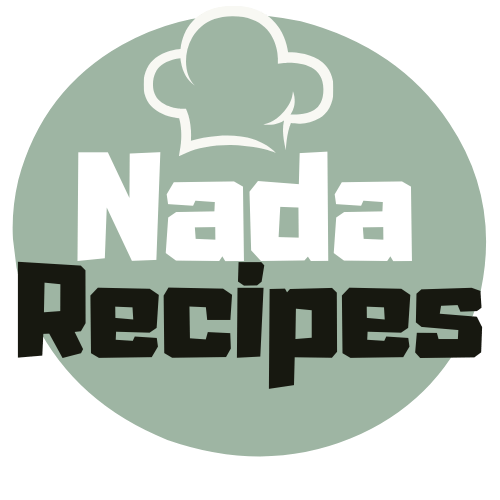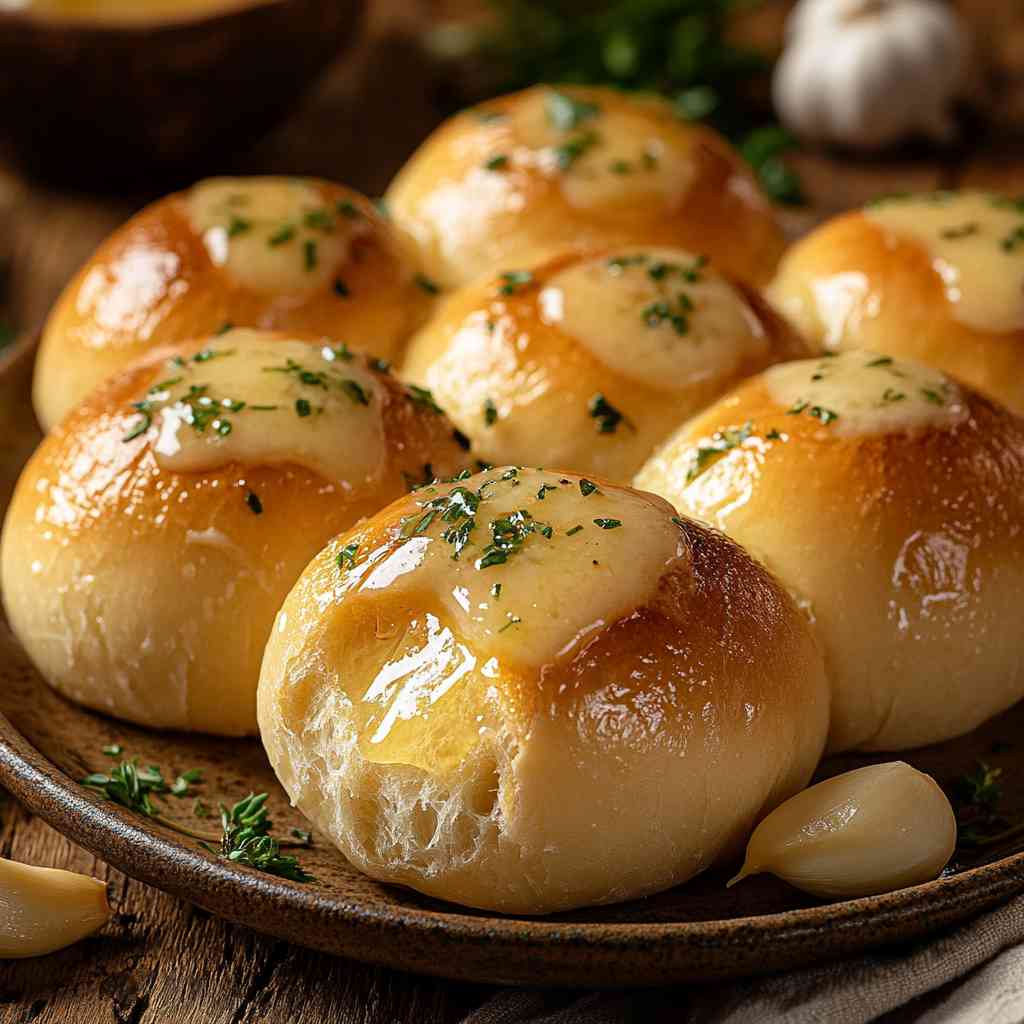Introduction:
Garlic bread rolls are a delicious fusion of soft, fluffy bread and rich, buttery garlic flavor. This comforting side dish has earned a place at countless dinner tables, thanks to its versatility and irresistible aroma. Whether served alongside pasta, soups, or even grilled meats, these rolls are the perfect addition to almost any meal.
In this guide, we’ll take a closer look at why garlic-infused bread is such a popular choice. We’ll also cover tips for keeping the rolls soft and light, and how to avoid common mistakes like ending up with tough bread. Plus, we’ve answered some frequently asked questions to help you achieve the best results every time.
Table of Contents
Why Garlic Bread Rolls Are a Must-Have Side Dish
Garlic bread rolls are not just a side dish; they’re an essential addition to many meals. Their unique combination of soft, pillowy bread and rich, buttery garlic flavor makes them a crowd-pleaser. Whether you’re hosting a dinner party or enjoying a quiet meal at home, these rolls elevate any meal. Let’s look at why garlic bread rolls are so popular and how they can enhance your dining experience.
Garlic Bread Rolls – The Perfect Complement to Main Dishes
Garlic bread rolls have an innate ability to complement a wide range of main dishes. Their buttery, garlic-infused flavor pairs perfectly with hearty pastas, soups, and even roasted meats. The soft, warm texture provides a satisfying contrast to dishes with more intense flavors or richer textures.
For example, garlic bread rolls are often served alongside classic pasta dishes like spaghetti or lasagna, where they absorb the rich sauce and add a comforting crunch. Whether you’re enjoying a bowl of creamy soup or grilled chicken, the addition of garlic rolls balances the meal, adding an extra layer of flavor and texture. Their mild sweetness and savory undertones elevate the dining experience, making every bite feel special.
If you’re a fan of pairing bread with pasta dishes, you may also enjoy our guide on making Soft and Fluffy Shokupan Bakery-Style Hokkaido Milk Bread, a perfect bread to serve alongside your favorite meals.
Garlic bread rolls are versatile enough to pair with a variety of dishes, adding a special touch to almost any meal. From pasta to grilled meats, their flavor and texture make them a staple in many kitchens.
For more delicious bread recipes that work as the perfect side dish, try our BBQ Pork Bolo Bao, an easy-to-make yet flavorful addition to any meal.
Garlic Bread Rolls – A Savory Snack for Any Time
Besides being a side dish, garlic bread rolls also make for an irresistible snack. Freshly baked rolls with garlic butter are incredibly comforting, offering a perfect bite when you’re craving something savory. These rolls are easy to prepare and are a fantastic option for quick get-togethers or a cozy snack at home.
They also pair well with a variety of dips, from creamy cheese spreads to tangy tomato sauces. Whether you’re having a movie night or enjoying a casual meal, garlic bread rolls are versatile enough to stand alone or serve as a complement to other foods. Their flavor and texture appeal to everyone, making them an easy and enjoyable choice for all occasions.
If you’re in the mood for more savory snacks, check out our Chinese Creamy Walnut Dessert Soup—a great way to kick off any meal or enjoy as a snack with your garlic bread rolls.
For a quick and delicious treat to complement your rolls, try our Vegan Banana Nut Blondies. These sweet treats make a great follow-up to any savory bread dish.
Garlic Bread Rolls – Ingredients & Step-by-Step Guide
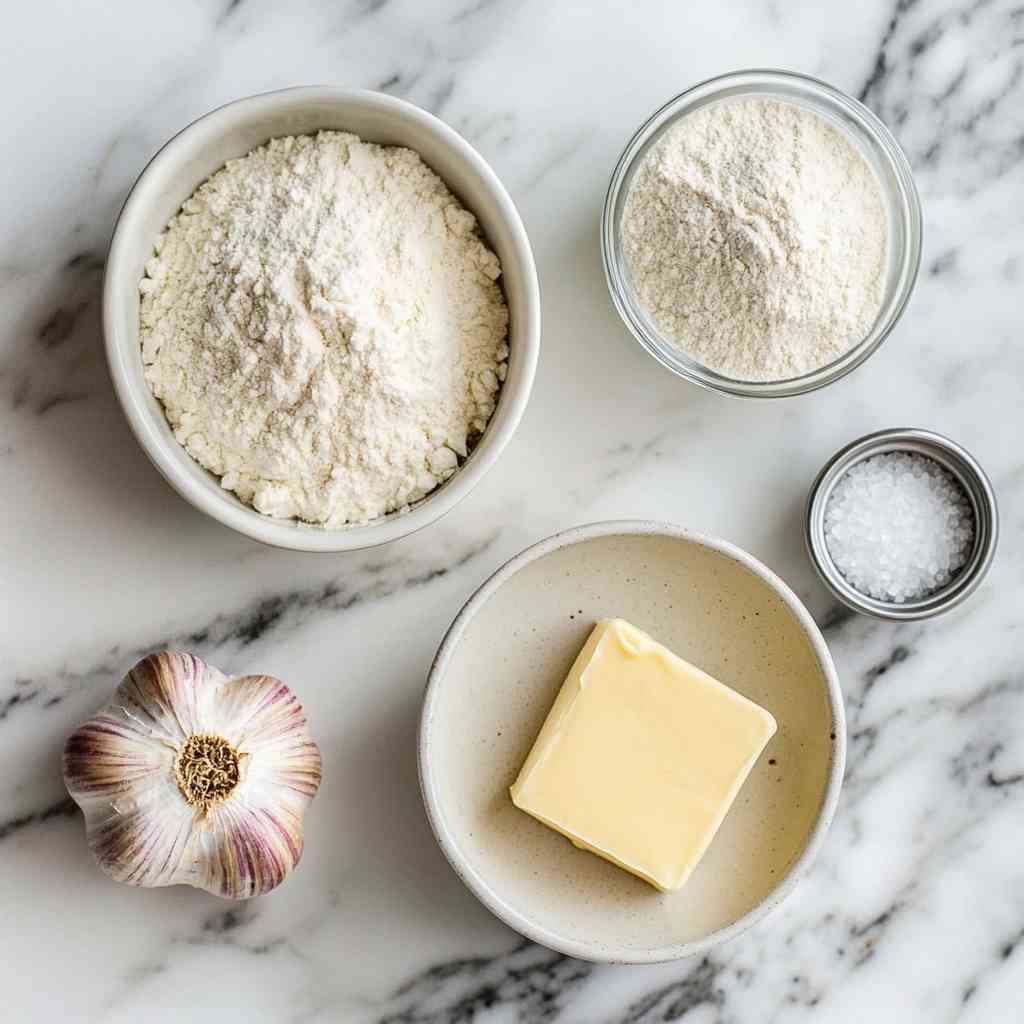
Now that we’ve covered some essential tips and tricks, let’s dive into the specifics of making garlic bread rolls from scratch. With the right ingredients and method, you can easily achieve soft, flavorful rolls that are the perfect complement to any meal.
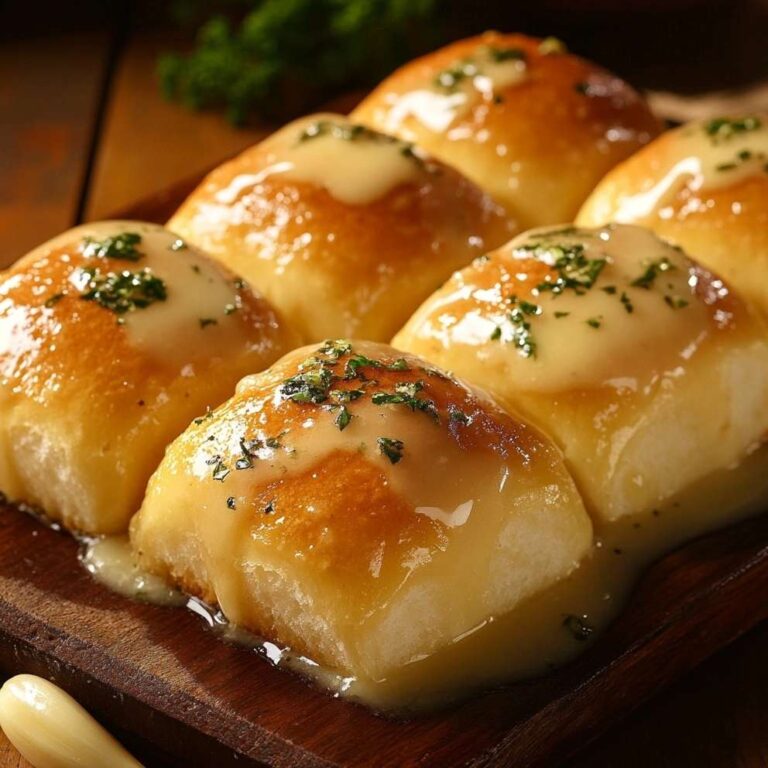
Garlic Bread Rolls: Soft, Buttery, and Full of Flavor
These garlic bread rolls are soft, fluffy, and irresistibly buttery with the perfect balance of garlic and herbs. Whether served alongside a pasta dish or enjoyed on their own, these rolls are a must-try for garlic lovers!
- Total Time: 40 minutes
- Yield: 12 rolls 1x
Ingredients
-
For the dough:
-
3 ½ cups all-purpose flour
-
1 packet active dry yeast (about 2 ¼ teaspoons)
-
1 teaspoon sugar
-
1 teaspoon salt
-
1 cup warm water (110°F)
-
2 tablespoons unsalted butter, softened
-
1 egg (for egg wash)
-
-
For the garlic butter:
-
½ cup unsalted butter, softened
-
4 cloves garlic, minced (or more for a stronger flavor)
-
2 tablespoons fresh parsley, chopped
-
½ teaspoon salt (or to taste)
-
¼ teaspoon black pepper
-
Instructions
-
Activate the Yeast:
In a small bowl, mix the warm water with sugar and sprinkle the yeast on top. Let it sit for 5-10 minutes until it becomes foamy. -
Prepare the Dough:
In a large mixing bowl, combine the flour and salt. Make a well in the center and pour in the yeast mixture. Add the softened butter and egg into the well. Mix everything together until a dough forms. Turn the dough onto a floured surface and knead for 8-10 minutes until smooth and elastic. -
First Rise:
Place the dough in a greased bowl and cover it with a clean towel. Let it rise for about 1-2 hours, or until it has doubled in size. -
Shape the Rolls:
Once the dough has risen, punch it down. Divide the dough into 12 equal pieces and shape them into rolls. Place them in a greased 9×13-inch baking dish, leaving some space between each roll.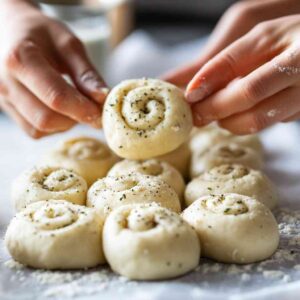
Shaping soft garlic bread rolls for baking. -
Prepare the Garlic Butter:
In a small bowl, mix the softened butter, minced garlic, parsley, salt, and pepper until well combined. -
Second Rise:
Cover the shaped rolls with a towel and let them rise for 30-45 minutes, until puffy. -
Bake the Rolls:
Preheat your oven to 375°F (190°C). Brush the rolls with an egg wash (1 beaten egg) and bake for 15-20 minutes or until golden brown. -
Apply Garlic Butter:
As soon as the rolls are out of the oven, brush them generously with the garlic butter. Serve warm!
Notes
-
You can make the dough ahead of time and refrigerate it overnight. Just make sure to let it come to room temperature before baking.
-
If you prefer a stronger garlic flavor, feel free to add more garlic to the butter mixture.
-
For a variation, try adding a bit of grated Parmesan cheese to the garlic butter for a cheesy twist.
- Prep Time: 20 minutes
- Cook Time: 20 minutes
- Category: Bread, Side Dish
- Method: Baking
- Cuisine: American, Italian
Nutrition
- Serving Size: 1 roll
- Calories: 180 kcal
- Sugar: 1g
- Sodium: 150mg
- Fat: 8g
- Saturated Fat: 5g
- Unsaturated Fat: 3g
- Trans Fat: 0g
- Carbohydrates: 24g
- Fiber: 1g
- Protein: 3g
- Cholesterol: 25mg
Keywords: garlic bread rolls, soft rolls, garlic butter, homemade bread
These garlic bread rolls are best enjoyed fresh out of the oven while the garlic butter is still warm and gooey. For an even more indulgent treat, pair them with your favorite Italian dishes or serve them alongside a bowl of soup.
If you’re looking for other soft bread recipes, you can try making Shokupan Bakery-Style Hokkaido Milk Bread, which offers another fantastic bread-making experience.
Should You Butter Rolls Before or After Baking?
When it comes to garlic bread rolls, the timing of when to add the butter can significantly impact the texture and flavor of the finished product. Buttering the rolls before or after baking each has its advantages. In this section, we’ll examine the effects of both methods, helping you decide which one works best for your garlic bread rolls.
Buttering Rolls Before Baking
One of the most common methods for making garlic bread rolls is to butter them before baking. This method has a few distinct advantages:
- Infuses Flavors Early: When you butter the rolls before baking, the garlic and butter mixture soaks into the bread, allowing the flavors to penetrate deeply into the dough. This gives each bite a more robust garlic flavor.
- Crispy Golden Crust: Buttering the rolls before baking helps create a beautiful golden-brown crust. The butter caramelizes as the rolls bake, creating a satisfying, crispy exterior.
- Even Coverage: When butter is applied before baking, it evenly coats the surface of the rolls, ensuring every bite is infused with garlic butter.
However, if you prefer a softer, less crunchy crust, you might find this method a bit too intense. The outside of the roll becomes crispier while the inside remains soft.
If you’re interested in more tips for achieving the perfect bread texture, you might find our recipe for Soft and Fluffy Amish White Bread helpful.
Buttering Rolls After Baking
On the other hand, buttering the rolls after baking gives you a different experience:
- Softer Texture: Buttering the rolls right after baking allows the butter to melt into the warm bread, giving it a softer, more delicate texture.
- Rich, Gooey Finish: By applying the garlic butter post-baking, the butter stays on top of the rolls, creating a rich, gooey, and indulgent topping that’s perfect for those who love a creamy, melt-in-your-mouth experience.
- Less Crusty Exterior: If you prefer a softer roll with less crunch, this method is ideal. It ensures that the exterior remains tender and moist, while still delivering the garlic butter flavor.
One of the challenges with this method, however, is ensuring that the butter evenly coats the rolls. You may need to brush the rolls thoroughly to ensure every part gets its fair share of flavor.
For more tips on making soft and tender bread, take a look at our No-Bake Matcha Chocolate Berry Cheesecake Recipe—it might inspire some new twists on your bread baking.
How to Keep Garlic Bread Soft After Baking
Garlic bread rolls, like any freshly baked bread, can become tough or dry after cooling down. Keeping them soft and fresh is key to maintaining their appeal. In this section, we’ll explore some tips and tricks to ensure your garlic bread rolls stay soft, fluffy, and delicious long after they’ve come out of the oven.
The Right Baking Technique for Softness
The way you bake your garlic bread rolls plays a big role in their softness. Here are some key techniques that can help:
- Don’t Overbake: Overbaking your rolls will cause them to dry out. Make sure to monitor the baking time closely. Once they reach a golden-brown color, remove them from the oven immediately. Overbaked rolls are more likely to be tough and dry.
- Use Steam in the Oven: Placing a small pan of water in the oven during baking can help create steam. This moisture prevents the rolls from drying out too quickly, ensuring a soft, tender texture.
- Cover with Foil: After the garlic bread rolls are done baking, consider covering them with aluminum foil. This traps the steam inside, keeping the rolls soft as they cool. Just be sure not to leave them covered for too long, or the crust may become soggy.
If you’re new to baking, we recommend trying our BBQ Calamari Recipe, which uses a similar technique for cooking seafood to keep it juicy and tender. Learning about moisture retention in baking can be applied across recipes!
Storing Garlic Bread Rolls for Softness
Storing your garlic bread rolls properly is just as important as the baking process. Here are some tips to keep them soft:
- Wrap Them Up: After the rolls have cooled, wrap them in a clean kitchen towel or parchment paper to help retain moisture. Avoid storing them in plastic bags as they can cause condensation, which could lead to soggy rolls.
- Use a Bread Box or Airtight Container: For long-term storage, place the wrapped rolls in a bread box or an airtight container. This keeps them from drying out and helps maintain their soft texture.
- Reheat with Care: If you need to reheat the rolls, do so gently to avoid losing their softness. You can wrap them in foil and reheat them in the oven at a low temperature (about 300°F) for 10–15 minutes.
For more bread storage tips and tricks, our Easy Nian Gao Recipe offers insights into keeping various baked goods fresh and ready to serve.
Why Are My Bread Rolls Tough?
There’s nothing worse than spending time baking a batch of garlic bread rolls only to find they’re tough and dense instead of soft and fluffy. Understanding the common causes of tough bread rolls can help you avoid these pitfalls and achieve the perfect texture. In this section, we’ll explore the reasons why bread rolls can become tough and how you can prevent it.
Overworking the Dough
One of the main reasons your bread rolls could end up tough is due to overworking the dough. Kneading is an important step in bread-making, but if you knead the dough too much, it can develop too much gluten. This results in a dense, chewy texture, rather than the light and fluffy rolls you’re aiming for.
- How to Fix It: Knead the dough just until it becomes smooth and elastic. You don’t need to overdo it—10 minutes of kneading should be sufficient. If you’re unsure, perform the “windowpane test.” Stretch a small piece of dough between your fingers. If it forms a thin, translucent membrane, the dough is ready.
For more tips on dough preparation and avoiding overworked bread, check out our Easy No-Bake Double Coconut Cream Pie Recipe, where we discuss methods for creating smooth textures without over-mixing ingredients.
Incorrect Flour-to-Water Ratio
Another reason for tough bread rolls could be an incorrect flour-to-water ratio. If you add too much flour, the dough will be too stiff and dry, while too much water can cause the dough to be too sticky and difficult to handle. Both extremes can result in tough, dense rolls.
- How to Fix It: Be sure to measure your ingredients carefully. It’s always a good idea to add flour gradually and adjust based on the dough’s consistency. The dough should be slightly tacky but not overly sticky. If it feels too dry, add a bit more water, a tablespoon at a time.
To help improve your bread-making skills, you may find our Chinese Bakery Fruit Sponge Cake Recipe useful, as it goes into detail on the importance of ingredient ratios for achieving soft, airy results.
FAQs ABOUT Garlic Bread Rolls
In this section, we’ll answer some of the most frequently asked questions about garlic bread rolls. These answers will help you avoid common mistakes and perfect your garlic bread every time.
What Is the Purpose of Garlic Bread?
Garlic bread is a flavorful and aromatic side dish that enhances the overall experience of any meal. It’s commonly paired with pasta, soups, and salads. The buttery, garlicky goodness of the bread complements the savory flavors of these dishes, making it an ideal addition to your dinner table. Whether served as a side or snack, garlic bread adds a comforting and satisfying element to your meal.
Pro Tip: Garlic bread is especially popular with Italian dishes, like pasta or lasagna. For more delicious side dishes to pair with your meals, check out our BBQ Calamari Recipe for another easy-to-make side.
Is It Better to Butter Rolls Before or After Baking?
It’s generally better to butter your garlic bread rolls after baking. When butter is applied before baking, it can sometimes cause the bread to dry out or become too crispy, depending on how much butter is used. On the other hand, adding butter immediately after baking ensures that the rolls stay soft, moist, and full of flavor.
If you prefer a crispier texture, you can butter the rolls before baking. However, for maximum softness and moisture retention, buttering them after baking is your best bet. Want to learn more about making soft, fluffy bread? Check out our Shokupan Recipe.
How Do You Keep Garlic Bread Soft After Baking?
Garlic bread rolls can sometimes become dry and hard if not stored correctly. To keep them soft after baking, wrap the rolls in a clean kitchen towel. The towel traps moisture, ensuring that your rolls remain soft and tender. After wrapping, store the rolls in an airtight container to prevent them from losing moisture.
For those who enjoy freshly baked bread but struggle to keep it soft, this method is a simple yet effective solution. If you’re also interested in bread storage tips, our Swiss Gipfeli Recipe offers some great bread-baking advice.
Why Are My Bread Rolls Tough?
Tough bread rolls can be the result of several factors, most commonly over-kneading the dough or not allowing it to rise long enough. Kneading the dough too much can lead to dense, tough bread, while insufficient rising time prevents the dough from reaching its optimal fluffiness.
Make sure you follow the instructions carefully, allowing the dough to rest and rise properly. If you’re looking for more tips to improve your baking techniques, consider checking out our Vegan Banana Nut Blondies Recipe for some helpful insights.
conclusion
Garlic bread rolls are a timeless favorite, offering a perfect balance of savory flavors and soft, fluffy textures. By following the tips shared in this article, you can make sure your rolls turn out perfectly every time, whether you’re baking them for a family dinner or a special occasion. Here’s a quick recap of the key takeaways:
- Garlic Bread Rolls Purpose: They’re a flavorful side dish that complements many meals like pasta, soups, and salads.
- Butter Application: Buttering your rolls before baking allows the butter to infuse the bread, while adding butter after baking gives an extra rich flavor.
- Softness Tips: To keep your garlic bread soft after baking, wrap them in a clean towel and store in an airtight container to trap moisture.
- Avoiding Tough Rolls: Ensure you don’t over-knead the dough or skip essential resting periods. Both steps are crucial for achieving a soft and airy texture.
Whether you’re making garlic bread rolls from scratch or experimenting with new variations, these tips will help you bake the best rolls every time. By avoiding common mistakes like overworking the dough and learning the best methods for buttering and storing your bread, you’ll enjoy fresh, soft garlic bread rolls at every meal.

If you want more baking tips, don’t forget to check out our No-Bake Matcha Chocolate Berry Cheesecake Recipe for another delicious dessert to try after your bread rolls.
If you want more recipes, tips, and updates, don’t forget to check out our Facebook page. Stay connected for more delicious ideas and baking inspiration!
